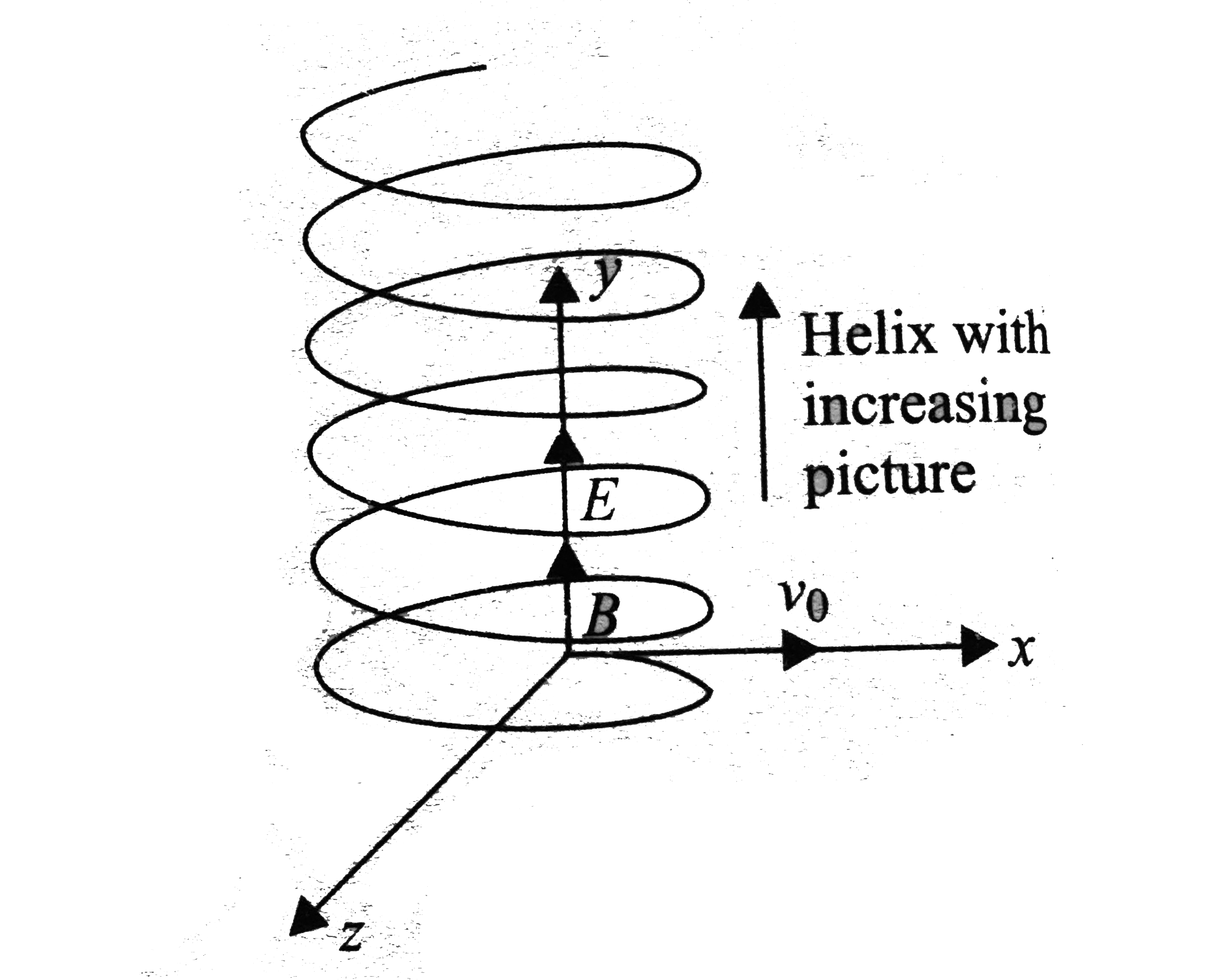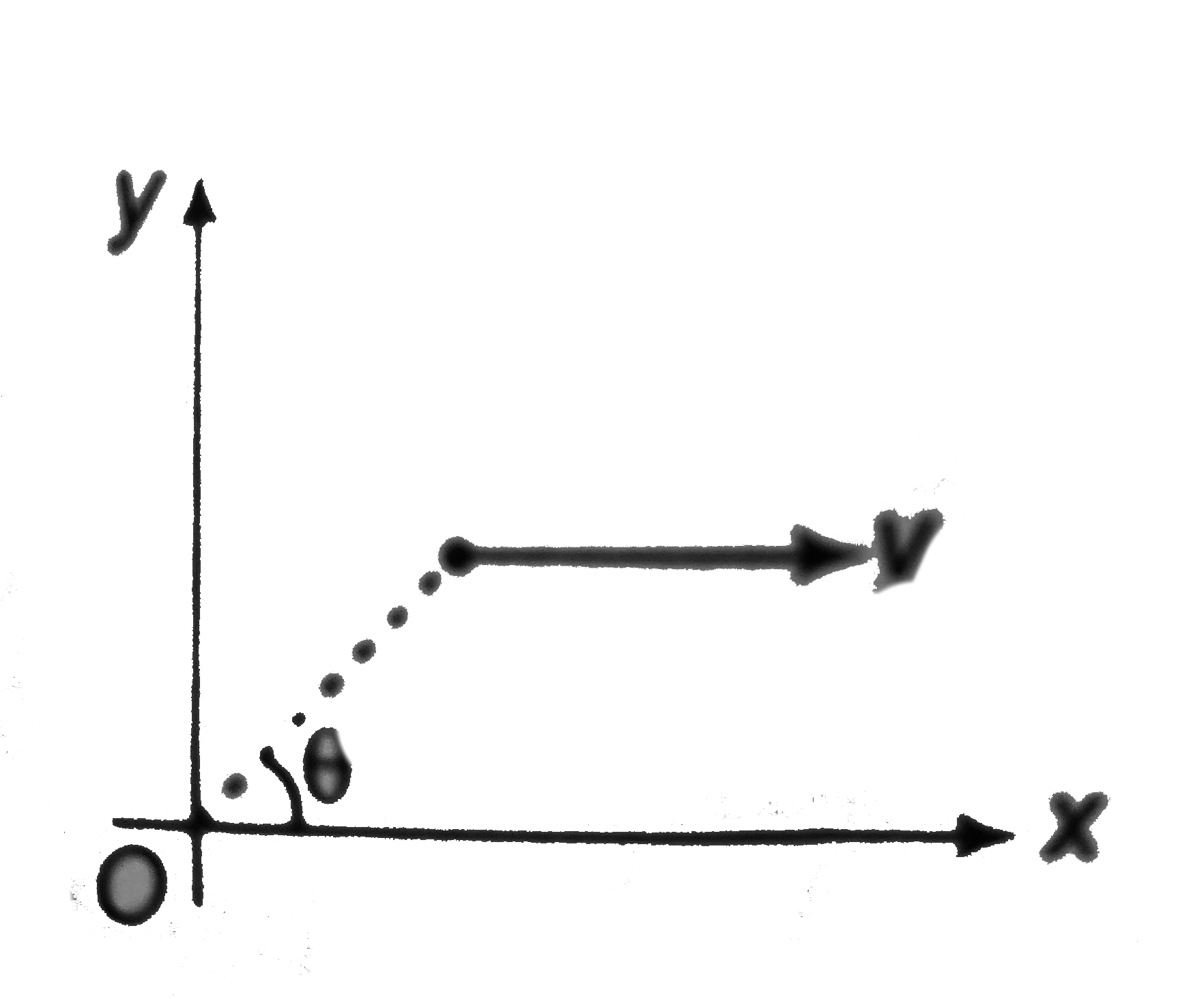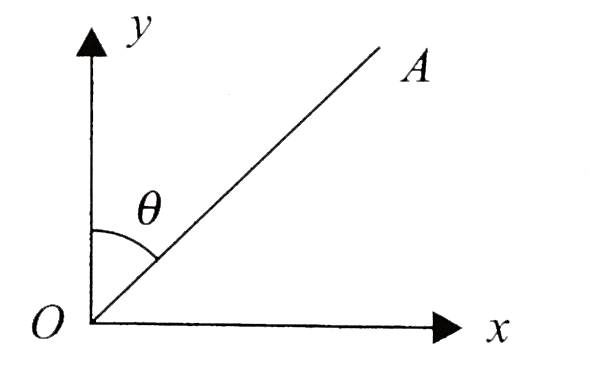Uniform electric field E and magnetic field B, respectively, are along y-axis as shown in the figure. A particle with specific charge q/m leaves the origin O in the direction of x-axis with an initial non-relativistic speed v0.

The angle α between the particle’s velocity vector and y-axis at that moment is:
tan−1(3v0B2πnE)
tan−1(v0BπnE)
tan−1(v0B√2πnE)
tan−1(v0B2πnE)
The correct Answer is:D
As vy=ayt=(qEm)(2πmnqB)=2πnEB
Thus tanα=v0vy=v0B2πnE⇒α=tan−1(v0B2πnE)

Similar Questions
Unifrom electric and magnetic fields with strength E and induction B respectively are directed along the y axis (Fig). A particle with specific charge q/m leaves the origin O in the direction of the z axis with an initial non-realtive velocity v0 find:
(a) the coordinate yn of the particle when it crossses then y axis for the nth time,
(b) the angle α between the particle's velocity vector and the y axis at that moment.

View SolutionUniform electrilcf and magnetic fields with strength E and B are directed along of x-axis. A particle with specific charge qm leves the origin in the direction of x-axis with an initial velocity v0. Find
a. the y-coordinate of the particle when it crosses the y-xis for nth time.
b. the angle α between the particle's velocity vector adn the y-axis for nth time
View Solution
Knowledge Check
Uniform electric and magnetic fields with strength E and induction B, respectively, are along y-axis as shown in Fig. A particle with specific charge q/m leaves the origin O in the direcction of x-axis with an initial non-relativistic velocity v0

The angle α between the particle's velocity vector and y-axis at and moment isAtan−1(3v0B2πnE)Btan−1(v0BπnE)Ctan−1(v0B√2πnE)Dtan−1(v0B2πnE)Uniform electric and magnetic fields with strength E and induction B, respectively, are along y-axis as shown in Fig. A particle with specific charge q/m leaves the origin O in the direcction of x-axis with an initial non-relativistic velocity v0

The coordinate y_nofthepartic≤whenitcrossesthey−aξsforthen^(th) time isA2π2mn2EqB2Bπ2mn2EqB2C2π2mn2E3qB2D√3π2mn2EqB2A uniform electric field of 500V/m is directed at 150∘ to the positive X-axis, in the X−Y plane as shown in figure
 AIf the coordinates of two points A and B be (4 cm , 0) and (−3cm,0), then the potential difference VA−VB will be 30.3 VBIf the coordinates of two points A and B be (4 cm, 0) and (3cm,0), then the potential difference VA−VB will be 4.3 VCThe electric field could be due to infinite thin sheet of chargeDThe electric field could be in a spherical cavity of a uniformly charged sphere
AIf the coordinates of two points A and B be (4 cm , 0) and (−3cm,0), then the potential difference VA−VB will be 30.3 VBIf the coordinates of two points A and B be (4 cm, 0) and (3cm,0), then the potential difference VA−VB will be 4.3 VCThe electric field could be due to infinite thin sheet of chargeDThe electric field could be in a spherical cavity of a uniformly charged sphere
An electron is projected along positive z-axis, magnetic field is present along y-axis then direction of initial acceleration of the particle is
View Solution
A particle mass parallel to x-axis with constant velocity v as shown in the figure. The angular velocity of the particle about the origin O
View SolutionUniform electric and magnetic fields are applied along the same direction and a negatively charged particle is given an initial velocity at an acute angle with the direction of the fields. What kind of a path will the particle follow?
View SolutionA uniform electric field →E in the y-direction and uniform magnetic field →B in the x-direction exists in free space. A particle of mass m and carrying charge g is projected from the origin with speed v0 along the y axis. The speed of the particle as a function of its y coordinate will be
View SolutionA uniform magnetic field B and electric field E exist along y and negative z axis respectively. Under the influence of these field a charge particle moves along OA undeflected. If electric field is switched off, find the pitch of helical trajectory in which the particle will move.

View Solution